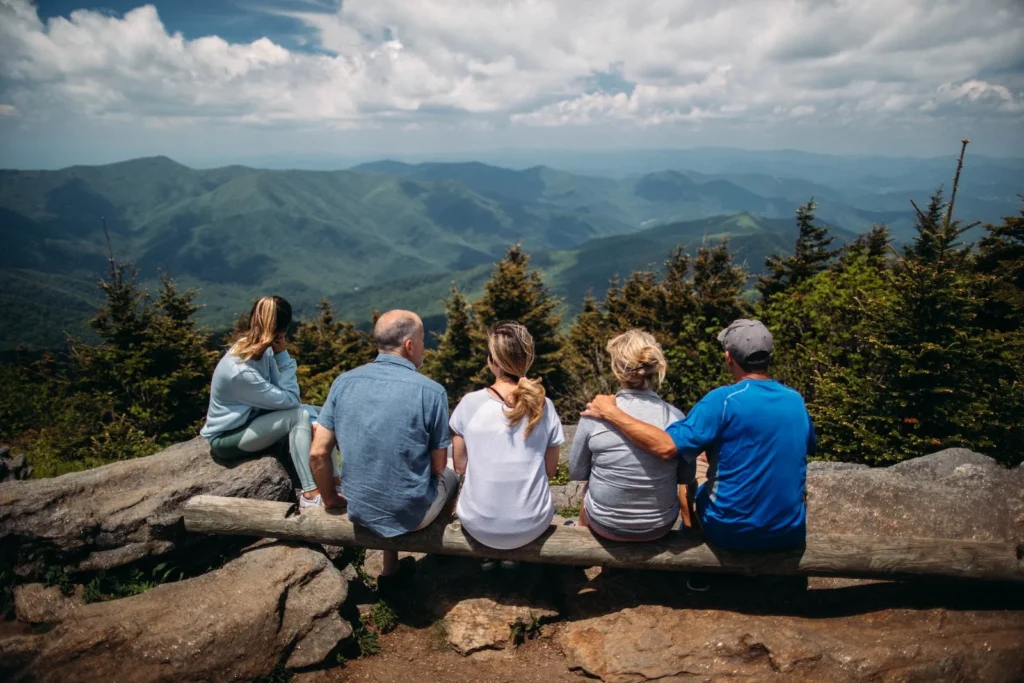Introduction to Allemansrätten
Sweden’s Allemansrätten, commonly known as the Right to Roam, stands as a cornerstone of Swedish culture and environmental policy. This unique concept, deeply rooted in Sweden’s history, allows everyone the freedom to wander and enjoy the natural landscape.
The essence of Allemansrätten is encapsulated in an age-old Swedish saying: “Inte störa, inte förstöra,” which means “Don’t disturb, don’t destroy.” It underscores the balance between public access to nature and the responsibilities that come with it.

1. Its origins
The origins of Allemansrätten can be traced back to the medieval laws and customs of Sweden. Although not formalized until the Swedish Environmental Code was enacted in 1998, the right has long been embedded in the collective consciousness of Swedes.
This right grants individuals the freedom to traverse private lands, to camp temporarily, and to forage for berries and mushrooms, while maintaining a respectful distance from homes and cultivated lands.
Unlike many countries where land privatisation often restricts access, Sweden’s Allemansrätten embraces an open access policy. This legal framework ensures that both locals and tourists can explore the nation’s forests, meadows, and coastal regions without extensive legal barriers.
2. Sustainable Tourism
However, it’s imperative to mention that this right is coupled with a profound respect for nature and private property, thus ensuring the sustainability of both the environment and local communities.
Allemansrätten plays a pivotal role in promoting sustainable tourism in Sweden. Tourists are encouraged to engage with nature responsibly, fostering an appreciation for Sweden’s diverse ecosystems and promoting eco-friendly practices.
This open access to nature not only enhances the visitor experience but also contributes to the conservation efforts through a shared sense of responsibility.
Overall, Allemansrätten is more than just a set of rights; it represents a cultural ethos that values and protects the natural world. As a societal norm, it enjoys widespread acceptance and awareness among Swedes, reinforcing a collective commitment to environmental stewardship.
By understanding this unique legal and cultural framework, one gains insight into how Sweden successfully balances public access with the preservation of its stunning natural landscapes.
3. Allemansrätten and Environmental Stewardship
Sweden’s Allemansrätten, or right to roam, represents a unique legal framework that grants public access to private land while emphasizing environmental stewardship. This ancient tradition, enshrined in Swedish law, underscores the country’s commitment to preserving nature and ensuring its enjoyment for future generations.
By allowing unrestricted access to meadows, forests, and lakes, Allemansrätten necessitates responsible behaviour from all who partake in its freedoms.
Core to Allemansrätten is the principle of “Do not disturb, do not destroy,” which serves as a guideline for minimizing human impact on nature. To enjoy Sweden’s natural beauty sustainably, visitors are encouraged to camp, hike, and pick berries or mushrooms without causing harm or leaving a trace.
This ethos is supported by educational initiatives aimed at fostering respect for the environment. Schools, local communities, and tourism operators actively disseminate information on sustainable practices, such as avoiding littering, respecting wildlife, and using designated fire pits for cooking.

Environmental Stewardship
Real-world examples of successful environmental stewardship abound in Sweden. The national park system and nature reserves offer prime illustrations of Allemansrätten in action. Here, visitors are provided with facilities and information on how to minimize their ecological footprint.
Guided tours and educational programs further reinforce the importance of conservation, ensuring that guests not only appreciate the natural landscape but also contribute to its preservation.
However, the increasing number of tourists poses challenges to this delicate balance. Popular tourist spots, particularly in the summer months, can face pressures that threaten their ecological integrity.
To address these concerns, Sweden employs various strategies, including limiting access to fragile areas, implementing seasonal restrictions, and enhancing visitor facilities to manage the flow of people more effectively. Additional efforts involve promoting less-visited regions to distribute the environmental load more evenly across the country.
Overall, Allemansrätten exemplifies how access to natural lands can coexist with conservation efforts, underscoring the importance of education and responsible tourism in maintaining the delicate equilibrium between freedom and stewardship.
4. Sustainable Tourism Practices Encouraged by Allemansrätten
Sweden’s Allemansrätten, or the right to roam, is a cornerstone of sustainable tourism in the country. This traditional right allows residents and visitors alike to freely explore Sweden’s vast natural landscapes, engaging in various eco-friendly activities while promoting environmental stewardship. Hiking, cycling, and camping are some of the primary activities enjoyed under Allemansrätten, each offering unique opportunities to connect with nature and support sustainability.
Hiking trails across Sweden are designed to minimize environmental impact, guiding travellers through pristine forests, across open fields, and along picturesque coastlines. Cyclists can enjoy dedicated bike paths that weave through urban and rural settings, reducing carbon footprints associated with motorized transport.
Campers, too, benefit from Allemansrätten as it allows for dispersed camping, meaning they can set up tents in nearly any natural area. This freedom, however, comes with a responsibility to leave no trace, ensuring that nature remains undisturbed and accessible for future generations.
5. Eco Travel Businesses
Many businesses and tourism operators have embraced the principles of sustainable tourism fostered by Allemansrätten. Eco-lodges, guided nature tours, and adventure outfitters across Sweden operate with a strong emphasis on sustainability.
For instance, some tour operators offer guided hikes and cycling tours that educate participants on local flora and fauna, conservation efforts, and the importance of preserving natural habitats. These businesses not only enrich the visitor experience but also contribute to local economies by collaborating with local communities and using locally sourced products.
Incorporating the right to roam into their business models, these operators are able to create immersive, responsible tourism experiences that highlight the natural beauty of Sweden without compromising environmental integrity.
By promoting activities that harmonize with nature and local cultures, sustainable tourism practices encouraged by Allemansrätten exemplify a viable path for future travel and tourism models.
Challenges and Future of Allemansrätten in Sustainable Tourism
Sweden’s Allemansrätten embodies a unique and cherished principle of public access to natural landscapes, fostering not only the well-being of its citizens but also attracting tourists who wish to experience the country’s pristine environments.
However, the increasing popularity of the Right to Roam presents significant challenges, particularly in terms of overcrowding. Popular sites often see a surge in visitors, leading to environmental degradation, habitat disturbance, and pressure on local resources.
Experts caution that unchecked tourism can jeopardize the very ecosystems Allemansrätten aims to preserve.
Climate change amplifies these challenges, as erratic weather patterns and rising temperatures impact natural habitats. For example, increased frequency of extreme weather events can cause soil erosion and damage fragile ecosystems, thereby limiting the areas that can sustain high visitor numbers.
As such, the traditional model of unrestricted access could require rethinking to adapt to these new environmental realities.

Balancing competing desires
Balancing conservation efforts with public access remains a key concern. Policymakers and community leaders are actively exploring strategies to ensure Allemansrätten aligns with sustainable tourism principles.
Initiatives include promoting less-known natural areas to distribute tourist traffic more evenly, enhancing conservation education among tourists, and improving infrastructure to minimize environmental impacts. These efforts aim to preserve the essence of Allemansrätten while protecting natural resources.
Enforcing Allemansrätten guidelines more stringently is another focus area. Authorities are considering measures such as visitor caps, increased monitoring of sensitive zones, and the introduction of permits for high-traffic areas.
Moreover, community involvement is crucial; local stewardship programs are being encouraged to foster a collective sense of responsibility towards natural environments.
Insights from experts underline the importance of continuous adaptation. Sustainable tourism under Allemansrätten will likely hinge on a dynamic approach that evolves with both ecological demands and public expectations.
This entails ongoing dialogue among all stakeholders—government bodies, environmental organizations, and the public—to find innovative solutions that support the Right to Roam while ensuring long-term ecological stability.




